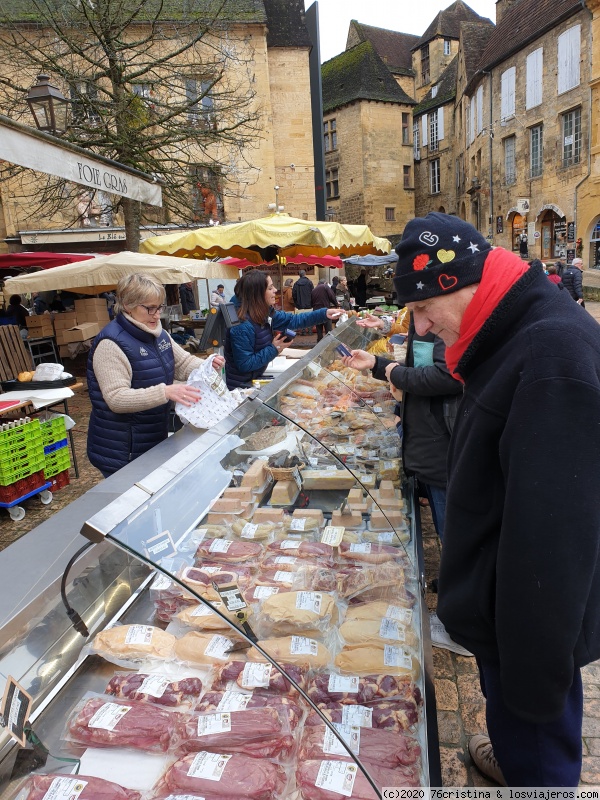
Sarlat, the capital of the Périgord Noir
Miercoles, 22 Febrero de 2023 a las 04:33:28
Publicado por Oficinas-Turismo
Legend has it that monks belonging to the order of Saint Benedict found refuge in the Middle Ages in the valley of the Cuze in order to found an abbey. It is also said that this was bestowed on the town by Clovis in the 5th Century…. Sarlat developed around the monastery and three centuries later was an important centre of pilgrimage.
The town’s abbey first had a seigneur and then in 1318 it became head of a diocese and its reputation as a prosperous merchant town quickly grew. Under the administration of the consuls, superb buildings sprang up – first in the Romanesque and then in the Gothic style: the architectural transformation was almost finished by the end of the 17th century. During that time the frontiers of the Dordogne Valley between the French and the English kingdoms were constantly changing, due to the battles of the Hundred Years War. For most of that time Sarlat remained faithful to the French Kings, and once peace was restored continued its expansion.

The Renaissance
The decades which followed brought with them new wealth. In particular, the mansions within the town walls flourished. Now that the Wars of Religion (during which the town resisted valiantly against the Huguenot influence) and the Fronde civil wars of 1648 to 1653 were over, Sarlat experienced a new golden age. More than ever established as the capital of the Périgord Noir, Sarlat was in a dominant position at the heart of the local economy: its markets were renowned and several religious orders settled here to revive links with the past.

In 1837 the medieval town saw a new period in its development and the Traverse, which is now the main street, opened up the town. Happily there was no irreversible damage to the town’s architecture. The historic centre kept its soul and its beautiful homes. This magnificent, ancestral decor was little adapted, however to the social demands of the 20th century, but was attractive as the background for one of the first theatre festivals in France. From the start the event attracted visitors and brought Sarlat into the limelight.
At the beginning of the sixties, the centre of Sarlat benefited from the lifesaving principals of the Malraux Law which introduced the concept of conservation in towns.
Little by little the 80 or so classified monuments were restored to their former glory, the inhabitants reclaimed their heritage and there was new life inside the ochre stone walls and in the alleyways and the squares, which continue to be animated in all seasons.
Sarlat today
Sarlat became a “Town of Art and History” and at the beginning of the 3rd millennium welcomes more than 2 million visitors a year.
Exploring Sarlat on your own – with or without an audio guide – can be great fun and an adventure of discovery. You can totally immerse yourself in the essence of Sarlat. The workshops and galleries of artists and craftsmen adorn the streets with their colourful boutiques…. Market stalls infuse the town with the same aromas and tastes that pervaded the town in the 12th century…. Festivals, the Ringueta, culinary events and fairs add to the authenticity ….. Street entertainers animate summer evenings with their spontaneous performances …. The subjects discussed with passion and enthusiasm by the locals on the restaurant and café terraces link the past with the present: rugby, mushroom gathering, wild boar hunting, medieval archaeology, historic battles, and the quality of this year’s truffles, the weather, ordinary and extraordinary events …… The daily news pages turn without end.

Guided Visits
Porches, walls, cobblestones and archways in the local ochre coloured stone make the visitor curious. What lies behind those facades? What tales of intrigue, love and drama could they tell? To find out the countless stories which make up the history of the medieval town you can join in a classic guided tour or a theatrical costumed tour or visit Sarlat with a local story teller. At each step, at each turn of the road, down an obscure alleyway, your guide will divulge all – or nearly all – the secrets and mysteries of Sarlat with great frankness and openess.
Sarlat Seen From Above
The world famous architect, Jean Nouvel, who spent his childhood in the capital of the Périgord
Noir, has transformed the ancient church of Sainte Marie into a covered market with monumental doors and in the tower there is a glass lift with panoramic views which was inaugurated in 2013. From way above the roof tops, the town reveals the passing of the centuries: you can make out the line of the ancient ramparts, get views of the old justice house and Sainte-Claire Abbey, see from the Lantern of the Dead to the historic Plamon mansion, from the Saint Sacerdos cathedral to the Maison de la Boétie, from the Town Hall to the Place de la Grand Rigaudie…
Information provided by Sarlat Tourism Board: https://www.sarlat-tourisme.com/